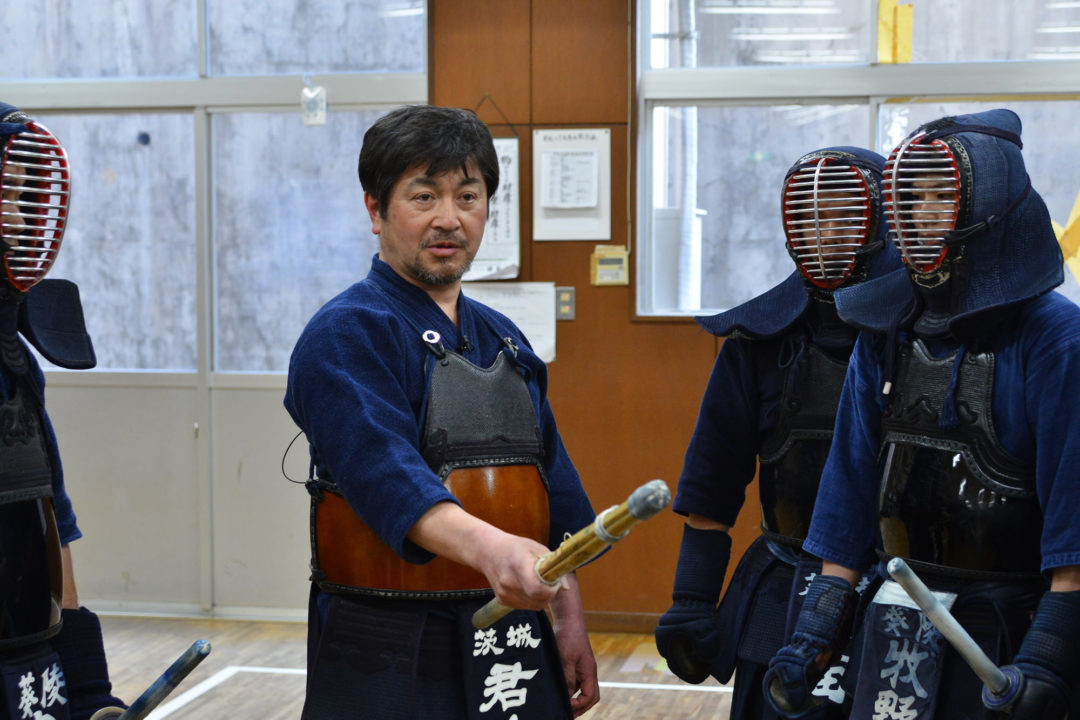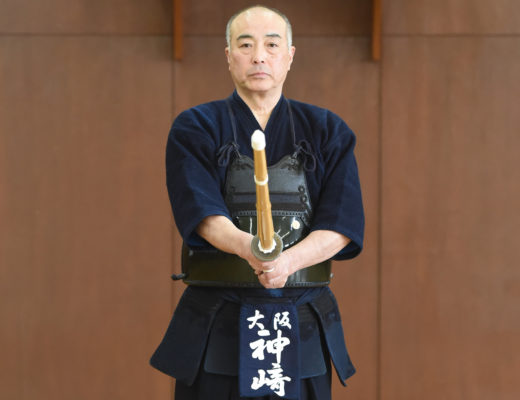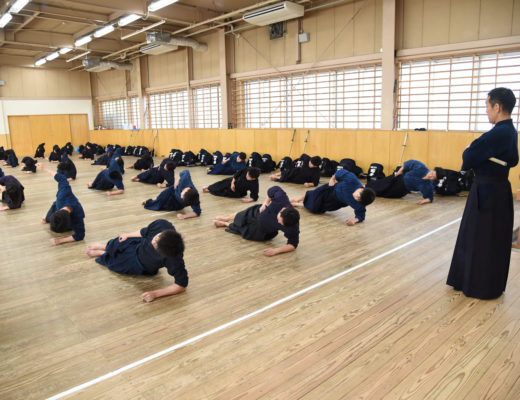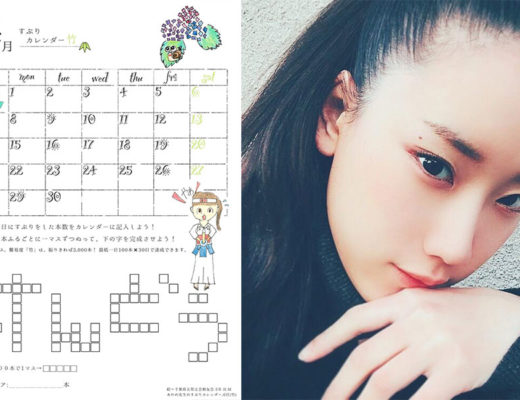KENDOJIDAI 2017.8
In 1987, coach Kimishima Norichika was assigned to Mito Junior College, which is the predecessor of Mito Kiryo High School. Since then, he has accumulated many brilliant achievements, including 2 Inter-High team championships, 4 individual championships and 2 time runner up at the National High School Invitational Chamionship.
“I haven’t taught them ways to win, I believe I’ve taught them winning itself consistently for 30 years.” This school’s Kendo emits a dazzling light in the high school Kendo world but how is it shaped? The Men-strike of Mito Kiryo is admired by everyone. What is the philosophy and training method of acquiring the Kendo that lasts for a lifetime?
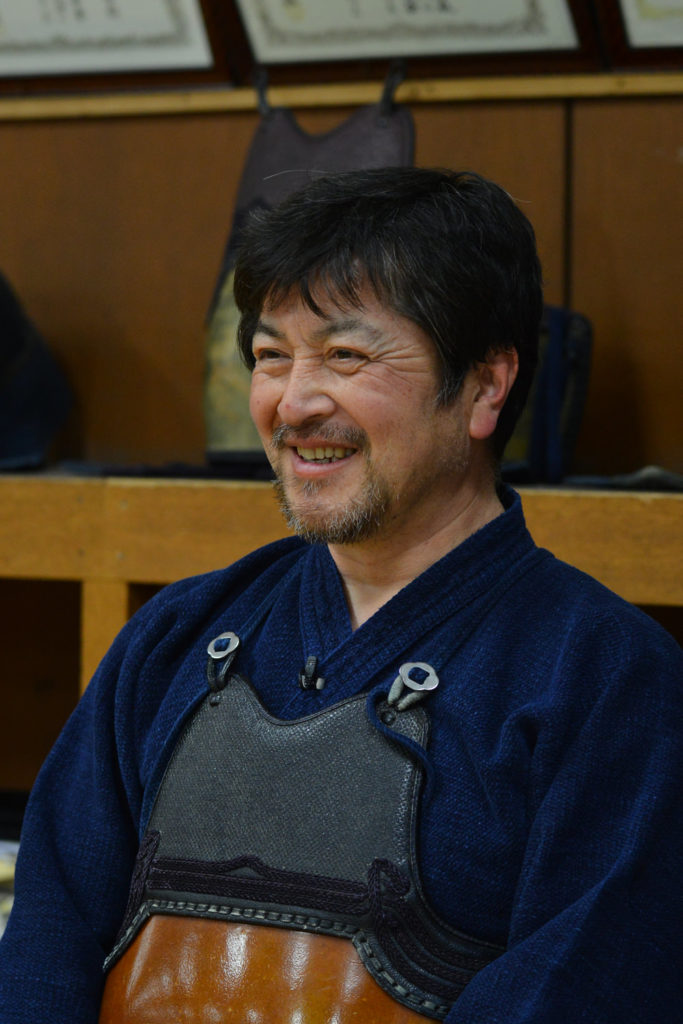
Coach Kimishima Norichika
Born in 1964, in Ibaraki Prefecture. Started Kendo at Mito Tobukan and entered Kokushikan University after Kokushikan High School. Upon graduation from college, he moved to Mito Junior College (currently Mito Kiryo High School) as a physical education teacher in 1987. Over 30 years of coaching, he has accomplished several brilliant achievements in various national tournaments, including 2 Inter-High team championships and 4 individual championship titles.
“When I became a teacher, high school Kendo in Ibaraki was never at a high level.
Even at Kanto level tournaments, you’d be lucky if you came across a high school from Ibaraki. When I was young, I felt that I wanted to change that situation somehow,” says Kimishima Norichika with a nostalgic look at the past. Nowadays, Ibaraki Prefecture is home to powerhouse high schools with Mito Kiryo’s boys and Moriya’s (a town in Ibaraki) girls having won national titles several times. But the journey was not straightforward.
Kimishima is from Ibaraki. He went to Kokushikan University from Kokushikan High School and returned to his hometown for a teaching job. He was assigned to Mito Junior College, the predecessor of the current Mito Kiryo High School.
At the time, Mito Junior College was a newly established school only two years in existence. The level of its Kendo club was not worth mentioning.
First, Kimishima, who has set the goal of winning in the prefecture, applied for a practice match at a certain school that was said to be powerful at the time, but they declined the request. “I knew we weren’t at that level yet. Perhaps the feeling of rejection at that point has ignited my teaching.”
It was in 1992 that we won our first prefectural qualifying tournament and with it obtained the right to participate in Inter-High. Even now, coach Kimishima remembers this moment clearly.
During the May holidays, Kimishima took his team and headed to a training event held in Wakayama. Uesato Masateru, who is also a big Senpai of his from Kokushikan, presided over the training. Uesato scolded coach Kimishima out of the blue when he visited the training. “Why didn’t you come before?!”
Perhaps Kimishima felt they couldn’t participate in national training events if they couldn’t even win at the prefectural level. However, for Uesato such reluctance was exactly the problem.
“Uesato-sensei had taken good care of me since I was a high school student. I should have asked him to let us join the training events right after I became a teacher.”
Kimishima was confused at first by Uesato’s anger, but as the days went by he felt the kindness behind his anger. It was probably no coincidence that they finally participated at the Inter-High that year.
Mito Junior College gradually gained strength and quickly became famous in 1995. The school took the title at the Kaisei Championship in Akita prefecture with Hiraoka Yusho, who was known for his large stature, as Taisho. Hiraoka maintained that momentum and won the individual championship at the Inter-High. That year, the school had joined the ranks of the so-called powerhouse schools.
In 1996, the school was renamed into Mito Kiryo High School. Since then, Kimishima has sought to win the team title at the Inter-High, but it remained out of their grasp. In 2001, Konosu Teruo won the second individual title at the Inter-High. The following year at the Inter-High, their team took 3rd place, reaching the podium for the first time, but not taking its top yet.
Kimishima says he reviewed his teaching after the Ibaraki Inter-High.
“I felt it was important to raise the level of the team as a whole. I had to grow other players as well rather than spending time on the talented core players.”
And the result came at the Kyoto Inter-High in 2006. Mito Kiryo had finally made it to the top of the nation, relying on Osonoi Naoki and Kanai Yuta, who are currently engaged in Kendo at the Metropolitan Police Department.
“At that time, the team had very few players who made achievements in junior high school. It was a moment where I became confident in my coaching in the sense that I was able to whip them up and win the Inter-High.”
It is commonly said that once a team wins, their past bitter experiences disappear like a bad dream. To date, Mito Kiryo has become a prestigious Kendo school in both name and reality, having won two Inter-high team titles and four individual titles.
“I don’t even know why the results came out. I can only say that I didn’t give up on my beliefs. I want to enable my students to win. Therefore, it is my belief that I haven’t taught them way to win, I’ve taught them winning itself consistently. This is what has come to be known as Mito Kiryo’s Kendo, which is appreciated by many people. We’ve not bent our ways, despite not being able to win in the past. I think that is what has created this result.”
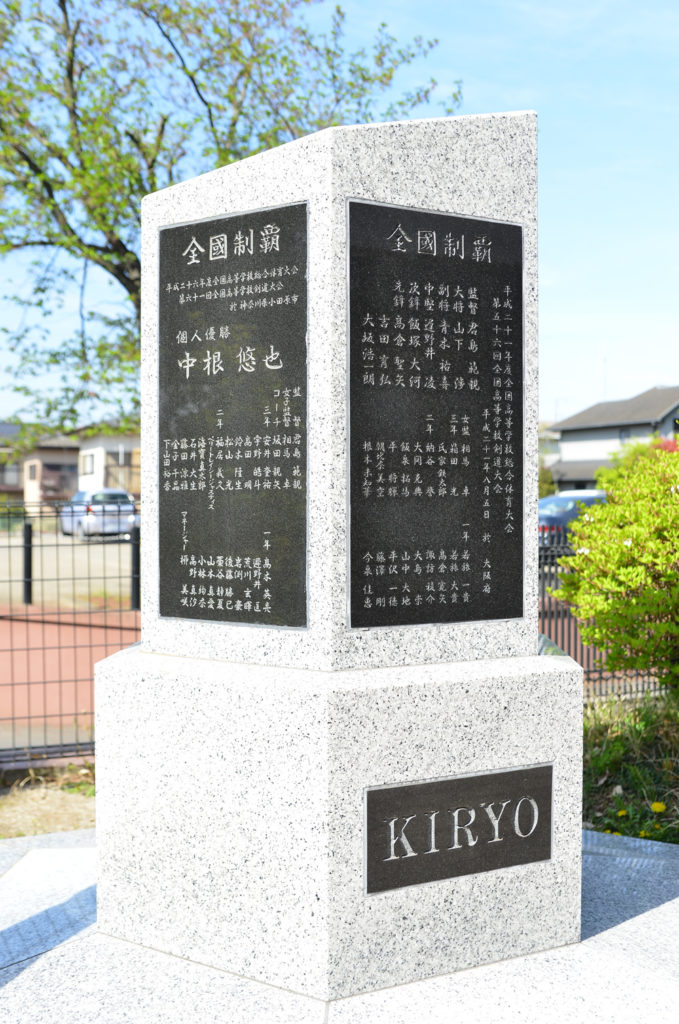
Mito Kiryo High School is located near Kairakuen, one of Japan’s three famous gardens. A monument was built at the main gate to honor the success of the Kendo club

The first Inter High participation was during the Mito Junior college days in 1992.
The placard of that time is still displayed in the dojo
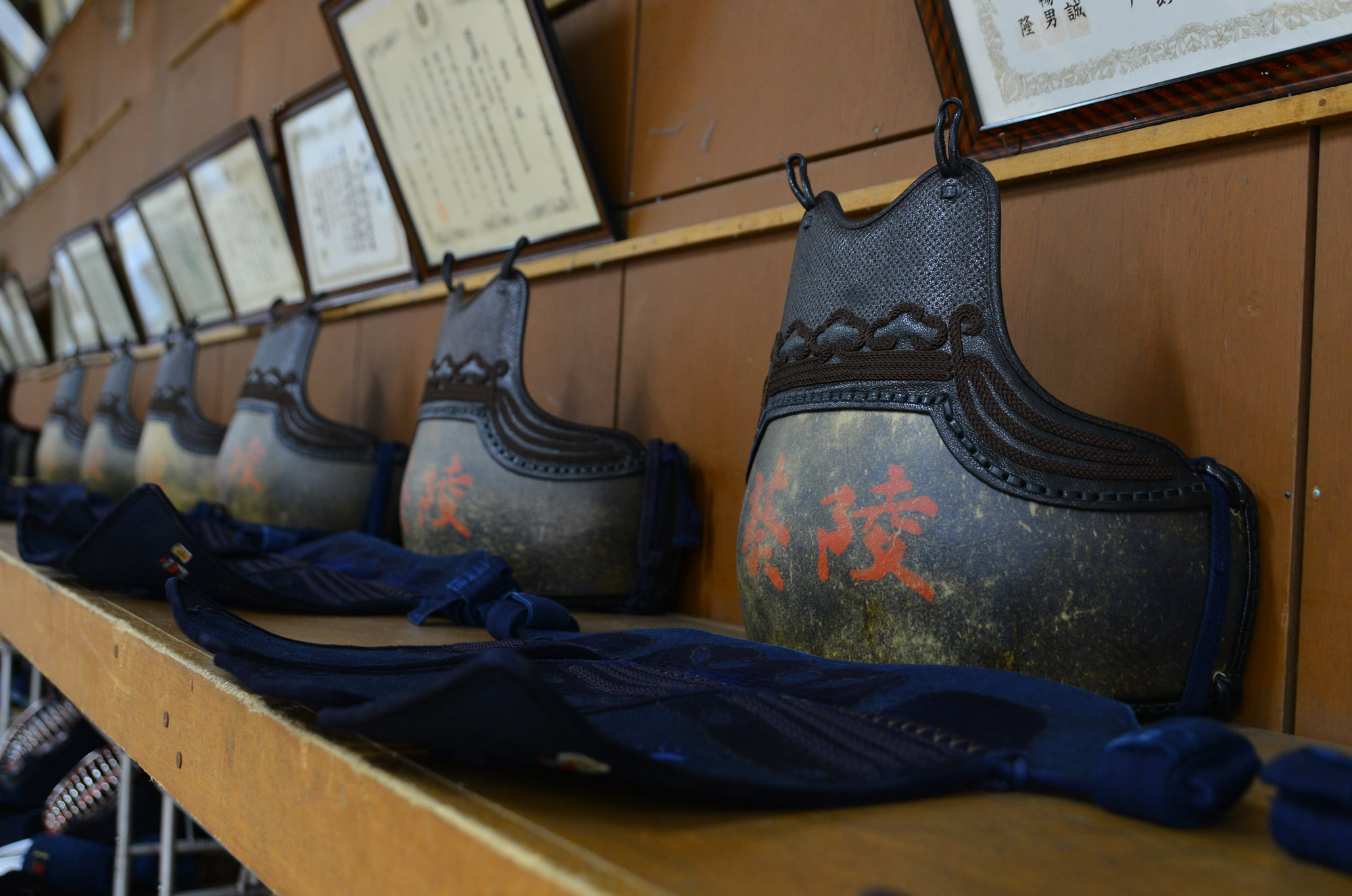
The Do of Mito Kiryo High School, which can be said to be an admired symbol for high school swordsmen.
Applicants from all over the country visit the Kendo club, wanting to conquer the nation in this Do
Kendo which strikes and does not avoid to be struck
“Ways to win” and “winning itself”. They appear to be very similar, but it looks like they are different for Kimishima. What is the difference?
The rest of this article is only available for Kendo Jidai International subscribers!

